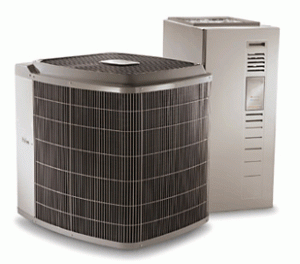
Have you been experiencing chilly drafts and uneven heating in your home this winter? Have your energy bills seemed higher than they ought to be for an Alpharetta or Decatur winter? If so, there’s a good chance you have air leaks in your house that need to be properly sealed. The good news is, sealing air leaks with caulk or weatherstripping is a fairly easy and straightforward task that you can probably handle yourself in an afternoon, and doing so will save you money on energy costs while keeping you more comfortable year-round. Your hard-working furnace will thank you!
Find Those Leaks
The first step in sealing up leaks is finding them. The easiest way to do this is to close all the windows and doors on a very cold and windy day (they’re probably closed anyway!), and turn on all fans and vents to depressurize your home. Then, you can light a stick of incense and use the smoke as a leak detector by walking around the house, passing by areas where air leaks are particularly likely to occur. These include
- Windows
- Doors
- Points of entry for cable, electrical wires, gas lines, or phone lines
- Fans, vents, or pipes that penetrate through exterior walls
- Areas where two different building materials come together
If you see the smoke from the incense stick wavering in one of these areas, you have an air leak.
Using Caulk to Seal Non-Movable Joints
Caulk, particularly silicone construction caulk, is great for sealing gaps in between two building materials that are stationary. If you don’t already have a half-barrel caulking gun, don’t worry, as they are inexpensive and typically found next to the disposable tubes of caulk in hardware stores.
Clean the area you intend to caulk with a damp cloth, and allow it to dry thoroughly. Then hold the caulking gun at about a 45 degree angle and apply the caulk in one long, continuous bead. You should apply caulk
- Around the edges of windows and door frames where they meet the walls
- In the gaps where any pipes, fans, vents or wires extend through exterior walls
- Along baseboards and molding
For Movable Joints, Use Weatherstripping
There are several types of weatherstripping available, with differing levels of price and effectiveness. Weatherstripping made from felt and foam is less expensive, but not as efficient as more-expensive vinyl in stopping air leaks. Metal weatherstripping is the most effective way to stop air leaks, but is also the most expensive option.
Once you’ve chosen a material, apply the weatherstripping to clean, dry surfaces, like
- The tops and bottoms of window sashes
- On the sides and top of the door frames and door stop
You might also want to consider adding a door sweep to the bottom of the door, as this area can be a major source of air leaks.
R.S. Andrews Wants You to Save Energy and Money!
If you have any questions about ways in which you can make your heating system more efficient and more cost-effective this winter, give us a call – we’re always happy to answer any questions you have about heating and indoor climate control, and our expert technicians are always ready to perform an energy audit on your home’s HVAC systems to help ensure you’re getting the best bang for your buck.

